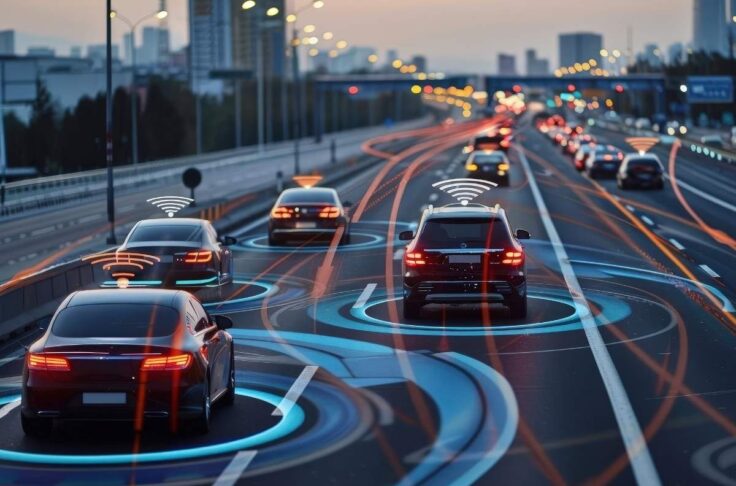How We Solved The One-Way Problem

In the bustling realm of carsharing, robust connectivity is the silent pillar of success. When a car loses connection, it’s more than just a technical glitch – it’s a rental that never happened, equaling lost revenue and eroded customer trust. This is where our Managed Connectivity steps up to ensure industry-leading reliability for smooth operations and satisfied customers. Prepare to journey through the complex yet compelling landscape of carsharing network reliability.
Connectivity in carsharing
In an always-on world, solid connectivity in carsharing services is no longer optional – it’s a necessity. It’s the backbone of an excellent customer experience, a continuous revenue stream, and the key to operators’ peace of mind for real-time vehicle monitoring. But this connectivity isn’t without challenges – poor signal in remote areas, overreliance on single cell service providers, or bugs in modem configurations can all impede reliable service.
Tackling the one-way problem
In the realm of carsharing operations, one issue has earned a notorious reputation for being difficult to spot and resolve. We call it the one-way problem. This challenge arises when a telematics unit can communicate with the server by sending data but fails to receive any client commands or requests. The triggers? Overloaded cell towers or hiccups during cell handovers often play a significant part.

The complex nature and subtlety of this issue make it both puzzling and hard to detect. But don’t be fooled by its quiet demeanor – the implications for both carsharing operators and their customers are substantial. Since the telematics unit is still able to send data, it does not realize it is no longer receiving commands from the server, effectively removing the car from service. Missed bookings due to unavailable cars translate into lost revenues for businesses and frustration for users who depend on reliable mobility services. With these high stakes in mind, developing an effective plan of attack against this elusive enemy is paramount – exactly what we’ve done at INVERS.
Our response to the one-way problem
Our brand new and completely free Server-Side Heartbeats takes us a step further in maintaining industry-leading reliability. Like a maestro conducting a symphony, this feature works in perfect harmony with our existing toolkit to synchronize operations, tackling network challenges such as the one-way problem head-on. Server-Side Heartbeats sends a signal to each and every CloudBoxx in the world in regular intervals.

If a CloudBoxx doesn’t receive an expected signal, it recognizes there’s a glitch born from the one-way problem and automatically takes action to restore connectivity.

This proactive tool augments our already efficient system that boasts of backup SIMs for network flexibility, LTE-M support for reaching distant areas, and Bluetooth as a trusty fallback — creating an ecosystem dedicated to ensuring that carsharing operators enjoy uninterrupted service. Best-in-class is not just a status for us; it’s a continuous pursuit.
Server-Side Heartbeats in action
This example from Belgium illustrates the one-way problem and how Server-Side Heartbeats works to keep CloudBoxx vehicles available at all times – regardless of network provider issues. In the selected time frame, the uplink communication from CloudBoxxes in the area to our server was working as intended. No more than two per cent of heartbeats were missing at any time. On the surface, everything seemed to be operational.

However, another graph displaying Server-Side Heartbeats tells a different story. Around 5:00 p.m., various vehicles began experiencing failures in their downlink communication. Up to 17 per cent of vehicles were no longer receiving Server-Side Heartbeats, meaning they were also unable to process commands and, thus, unavailable for customers to rent.

Thanks to Server-Side Heartbeats, the affected CloudBoxxes recognized the issue and automatically took action to reestablish communication to the server. As the graph shows, this allowed our platform to autonomously restore fleet-wide connectivity within minutes, ensuring maximum reliability for this carsharing operator. A look into downlink failure data from one of our global network providers confirms the issue stemmed from a problem on the side of the Belgian network operator.

Regardless of what exactly caused this outage, CloudBoxx-equipped vehicles were the first to be back online and ready for the next rental.
Conclusion
As our journey through the complex landscape of carsharing connectivity draws to a close, it’s clear that INVERS raises the bar when it comes to network reliability. With Server-Side Heartbeats, an integral part of our sophisticated Managed Connectivity offering, we continue to uphold the trust our customers place in us. Especially in multi-location enterprise fleets, Server-Side Heartbeats reduces support workload considerably while ensuring consistent service delivery for uninterrupted revenue. This commitment to excellence has propelled our telematics unit – the CloudBoxx – to power over 60% of the European contactless carsharing market. If you’re ready to harness the strength of unparalleled reliability, visit our CloudBoxx page. Not just an industry leader, but a game-changer, the CloudBoxx is your key to unlocking unprecedented operational efficiency and customer satisfaction in the realm of shared mobility.


